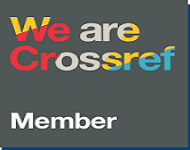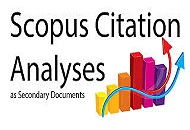User Menu
AUTHOR GUIDELINES
AUTHOR GUIDELINES
- General Requirements
The minimum standard requirements of Jurnal Paedagogy must be;
- Written in English.
- The length of submitted paper is no more than 12 pages. Editors will be evaluated if the papers are needing more pages than 12 pages.
- Use of a tool of Mendeley for reference management and formatting, and choose APA style
- Make sure that your paper is prepared using the Template (Download)
- Structure of The Manuscript
The manuscript must be prepared and suggested present follow the structure:
- TITLE. The title of paper is max 15 words, without Acronym or abbreviation. The title must be written briefly and clearly, and must show precisely the problem to be raised, not to provide a variety of interpretive opportunities, not to contain abbreviations that are not commonly used, not too long (no more than 15 words), Times New Roman, font size 14 pt.
- THE AUTHOR NAME. Full name without academic degrees and titles, the author name should be accompanied by complete affiliation address and corresponding email.
- ABSTRACT. The Abstract is written in one paragraph containing 150 - 250 WORDS; No citation; State in the abstract a general statement about the impotence of the topic, gap in literature or discrepancies between theories and practices, purpose of the study, method, main findings, and conclusions. Abstracts for each language can only be written in one paragraph in a single column format. Keywords: Written in English 2-5 words or groups of words, written alphabetically.
- INTRODUCTION (12pt, times new roman). The introduction must contain (in sequence) a general background, a state of the art as a basis for statements of scientific novelty from articles, statements of scientific novelty, and research problems or hypotheses. At the end of the introduction, the purpose of the article review must be written. In the format of scientific articles, literature review is not permitted as in the research report, but is manifested in the form of a state of the art study to show the scientific novelty of the article.
- RESEARCHMETHOD (12pt, Times New Roman). This section contains author(s) sufficient detail of the preparation of the current study dealing with data collection and processing. The author(s) should convey a chronological explanation of the study, covering preparation of research materials, design, and research procedures. Furthermore, it is required to supply an explanation regarding the method(s) used in the research. This section fills 10-15% of the manuscript.
Research Method
This subsection contains author(s) statements regarding the method of the research selected from one of three approaches in conducting a research, i.e. qualitative, quantitative, or mixed research. Each approach offers various research designs for various research designs. This subsection should be part of section about method. Hence, it also provides brief description of variables of the study.
Population and Sample or Subject
This subsection is used to declare the number of population and sample or the subject(s) selected for a qualitative study. In selecting sample and subject, please declare your technique and/or your parameter. Furthermore, in a study using study groups, write in brief about how groups are allocated.
Instruments
This subsection describe shortly about equipment, instruments or measurement tools including model number and manufacturer being used.
Data Analysis
In data analysis subsection, the author(s) is required to process data from previous stage. Different method used may result on different model of data processing. For a quantitative study, author(s) should show how s/he calculated derived variables (to deal with outlying values and missing data). Hence, s/he has to summarize the data. Analysis using software should be completed with details (name and version of the software). For statistical tests, please mention reference for less commonly used tests and what was compared. It is also suggested to give critical alpha probability (p) value at which differences or relationships were considered to be statistically significant.
- Research findings and Discussion (12pt, Times New Roman). The results and discussion contain scientific research findings and discussions. Write down scientific findings obtained from the results of research that has been done but must be supported by adequate data. The scientific findings referred to here are not the results of the research data obtained. The scientific findings must be explained scientifically including: What scientific findings were obtained? Why did that happen? Why are trend variables like that? All these questions must be explained scientifically, not only descriptive if necessary
supported by adequate scientific basis phenomena. In addition, it should also be explained in comparison with the results of other researchers who are almost the same topic. The results of the research and findings must be able to accommodate the research objectives in the introduction. - Conclusion and suggestion (12pt, Times New Roman). The conclusion describes the answer to the hypothesis and/or the purpose of the research or scientific findings obtained. Conclusions do not contain repetitions of the results and discussion, but rather summarize the findings as expected in the objectives or hypotheses. In this section, the author(s) should give his/her comprise statement regarding the major findings and implications of the study, but not the whole study. It is not suggested to bring any new information in the conclusion.
- Acknowledgment (optional) (12pt, Times New Roman). This section can be written in case there are certain parties need to be acknowledged, such as research sponsors. The acknowledgement must be written in brief and clear. In addition, avoid the hyperbole acknowledgment
- References (12pt, Times New Roman). The references are written in APA style. All references referred to in the text of the article must be registered in the References section. The bibliography must contain reference libraries originating from primary sources (scientific journals and amounting to a minimum of 80% of the total bibliography) published in the last 10 (ten) years. Each article contains at least 10 (ten) references. Writing a referral system in an article text and writing a bibliography should use a reference management application program, for example: Mendeley, EndNote, or Zotero, or others.
Guide to Writing References
Writing references should use reference management applications such as Mendeley, End Note, Zotero, or others. The format of writing used in the Jurnal Paedagogy is in accordance with the format of the APA (American Psychological Association).
Journal articles:
Grady, J. S., Her, M., Moreno, G., Perez, C., & Yelinek, J. (2019). Emotions in storybooks: A comparison of storybooks that represent ethnic and racial groups in the United States. Psychology of Popular Media Culture, 8(3), 207-217. https://doi.org/10.1037/ppm0000185
Book/Ebook:
Jackson, L. M. (2019). The psychology of prejudice: From attitudes to social action(2nd ed.). American Psychological Association. https://doi.org/10.1037/0000168-000
Articles in proceedings:
Kushilevitz, E., & Malkin, T. (Eds.). (2016). Lecture notes in computer science: Vol. 9562. Theory of cryptography. Springer. https://doi.org/10.1007/978-3-662-49096-9
Published Dissertation or Thesis:
Zambrano-Vazquez, L. (2016). The interaction of state and trait worry on response monitoring in those with worry and obsessive-compulsive symptoms[Doctoral dissertation, University of Arizona]. UA Campus Repository. https://repository.arizona.edu/handle/10150/620615
Chapter in an edited book:
Aron, L., Botella, M., & Lubart, T. (2019). Culinary arts: Talent and their development. In R. F. Subotnik, P. Olszewski-Kubilius, & F. C. Worrell (Eds.), The psychology of high performance: Developing human potential into domain-specific talent(pp. 345-359). American Psychological Association. https://doi.org/10.1037/0000120-016
Website:
Toner, K. (2020, September 24). When Covid-19 hit, he turned his newspaper route into a lifeline for senior citizens. CNN. https://www.cnn.com/2020/06/04/us/coronavirus-newspaper-deliveryman-groceries-senior-citizens-cnnheroes-trnd/index.html
Articles from the Newspaper:
Carey, B. (2019, March 22). Can we get better at forgetting? The New York Times. https://www.nytimes.com/2019/03/22/health/memory-forgetting-psychology.htmlÂ
Article Selection and Publication Process
- Upon receipt of article submission, the Editor sends an email of confirmation to the corresponding author within one and two weeks. If you fail to receive this confirmation, your submission/email may be missed.
- Peer review. We use a double-blind system for peer review; both reviewers and authors identities remain anonymous. The article will be peer-reviewed by two-three reviewers. The review process may take 2-5 months.
- Notification of the result of review is by e-mail.
- The authors revise paper according to the feedback and suggestions by reviewers. Upon acceptance, a publication fee is to be paid by the author to the journal.
- After publication, the corresponding author will receive an email of notification on the e-journal in PDF that is available on the journal webpage, and free of charge for download.
- It normally takes about 6-9 months from submission to publication.






